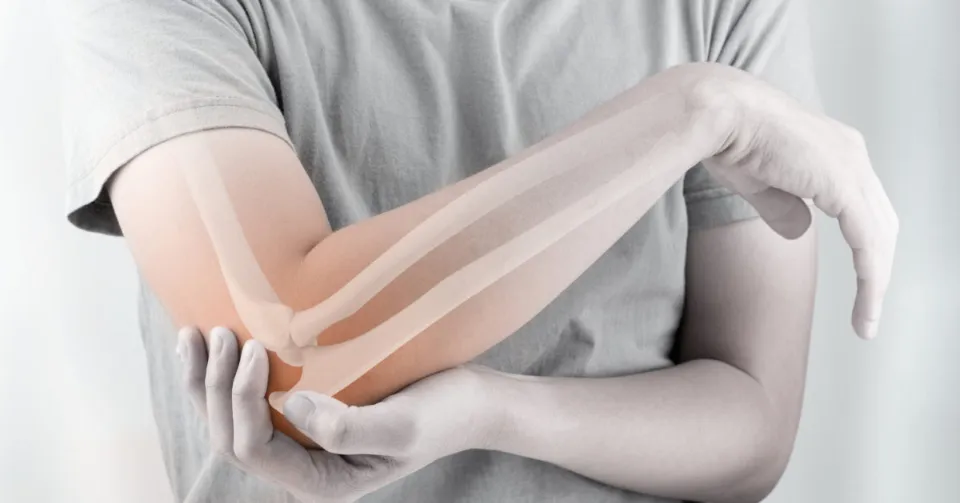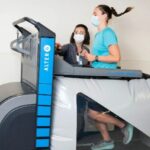Tendonitis Vs. Tendinosis – Differences & How to Tell

“Itis”: Signifies an inflammatory process; “Osis”: represents the process of degeneration. An “osis” on the other hand has pain, and swelling, but no longer has inflammation.
Chronic inflammation and tendinitis are real conditions, but not in the way that most people seem to believe. An “itis” is defined by a certain time frame and set of characteristics. Once outside of that time frame, it becomes an “osis,” and is characterized by a different set of characteristics.
Differences Between Acute and Chronic
Less than two weeks old injuries that are actively healing and being restored are considered acute and sub-acute injuries. An “itis” falls into this category. An injury that is not resolved past the 2 week mark is becoming classified as chronic and would be considered an “osis.” “Itis” injuries are associated with pain, swelling, and inflammation. An “osis” on the other hand has pain, swelling, but no longer has inflammation.
This is where I think there are a lot of problems with how we handle pain and injury. We assume that it must be inflamed because there is pain. Furthermore, since it is inflamed, we must take action to lessen and manage the inflammation. But this is simple not true and by defining what an “osis” is we can start to see that. So what about your “chronic inflammation?”
What Does It Mean to Have Chronic Inflammation?
True chronic inflammation defines only one set of issues. These conditions are referred to as autoimmune diseases. These include conditions like Crohn’s disease, ulcerative colitis, or multiple sclerosis. Chronic Inflammation is a defining feature of these diagnoses. If you experience chronic pain in a joint or tissue but do not have an autoimmune disease, your pain and injury were likely poorly managed for a very long time. You have probably been attempting to mask the pain rather than addressing the cause of it.

Important Distinction
A tendon problem can cause pain that develops gradually over time or that is sudden and severe.
Tendonitis is an acutely inflamed, swollen tendon with no microscopic tendon damage. Inflammation is the main cause of tendinitis.
Contrarily, a tendon with tendinopathy has disorganized fibers, a hard, thickened, scarred, and rubbery appearance, and is chronically damaged. Degeneration is the primary factor in tendinosis.
Because the final treatment for the two can be very different, it is crucial to distinguish between the two.
A very straightforward musculoskeletal ultrasound examination that can be completed in the doctor’s office allows for the distinction to be made. The tendinitis swelling and inflammation as well as the tendinosis chronic degenerative changes can both be easily found using ultrasound.
Treatment
It is necessary to address either the inflammation or degeneration that is causing the tendinitis or tendinosis in question.
For tendinitis:
- Rest, avoid the repetitive motion that originally caused the pain
- Short term use of over-the-counter anti-inflammatories, such as ibuprofen or naproxen
- A tennis elbow strap can be used for the elbow; there are various other types of braces and straps for patellar and Achilles tendinitis
These natural remedies should take effect within four to six weeks. Call your doctor if the pain doesn’t go away, as a tendon ultrasound may be required.
An injection of corticosteroids may be necessary to reduce inflammation and treat the condition if the ultrasound reveals tendinitis. You might only require this along with a physical therapy regimen to return to your daily routine.
When Pain Doesn’t Subside?
We may suggest a new, minimally invasive, FDA-approved office-based procedure called ultrasonic percutaneous tenotomy if you have tendinosis, the pain lasts longer than three months, and nothing else has helped.
During the procedure, the damaged tendon tissue is gently disintegrated and removed using a thin metal probe that vibrates at 20,000 rpm. The normal, flexible, soft tendon is unaffected.
Here’s what to expect:
- To numb the skin and injured tendon, we inject a local anesthetic.
- We make a tiny puncture in the skin that is comparable in size to the pointer arrow on your computer screen.
- The vibrating probe is used only briefly during the procedure’s 20 minutes. You shouldn’t experience any pain during the procedure thanks to the local anesthetic.
- There is no need for stitches after the procedure; a bandage is instead used.
If the procedure is successful, you can return to your regular activities in five to six weeks and the procedure eliminates pain at its source.
Complete and Partial Tendon Ruptures
Rupture is another word for tendon tears. A tendon is said to have completely ruptured if it is split in two, and it has only partially ruptured if some of the tendon is still intact.
Some physicians make a distinction between acute and chronic tendon ruptures.
- An acute tendon rupture is a single-occurrence occurrence that can cause immediate pain, decreased joint function, and may be followed by swelling or bruising. Within two weeks of the injury, an acute rupture is typically identified and treated.
- Chronic tendon ruptures may result from:
- A partial rupture that slowly worsens over a prolonged period, or
- an acute rupture left untreated for a period of time (many experts believe this period varies from 4 to 6 weeks depending on the tendon).
A doctor may advise either surgery, immobilization with a splint; or a period of rest to treat the tendon rupture, depending on the patient, the affected joint, the severity of the tear, and the length of the symptoms.









